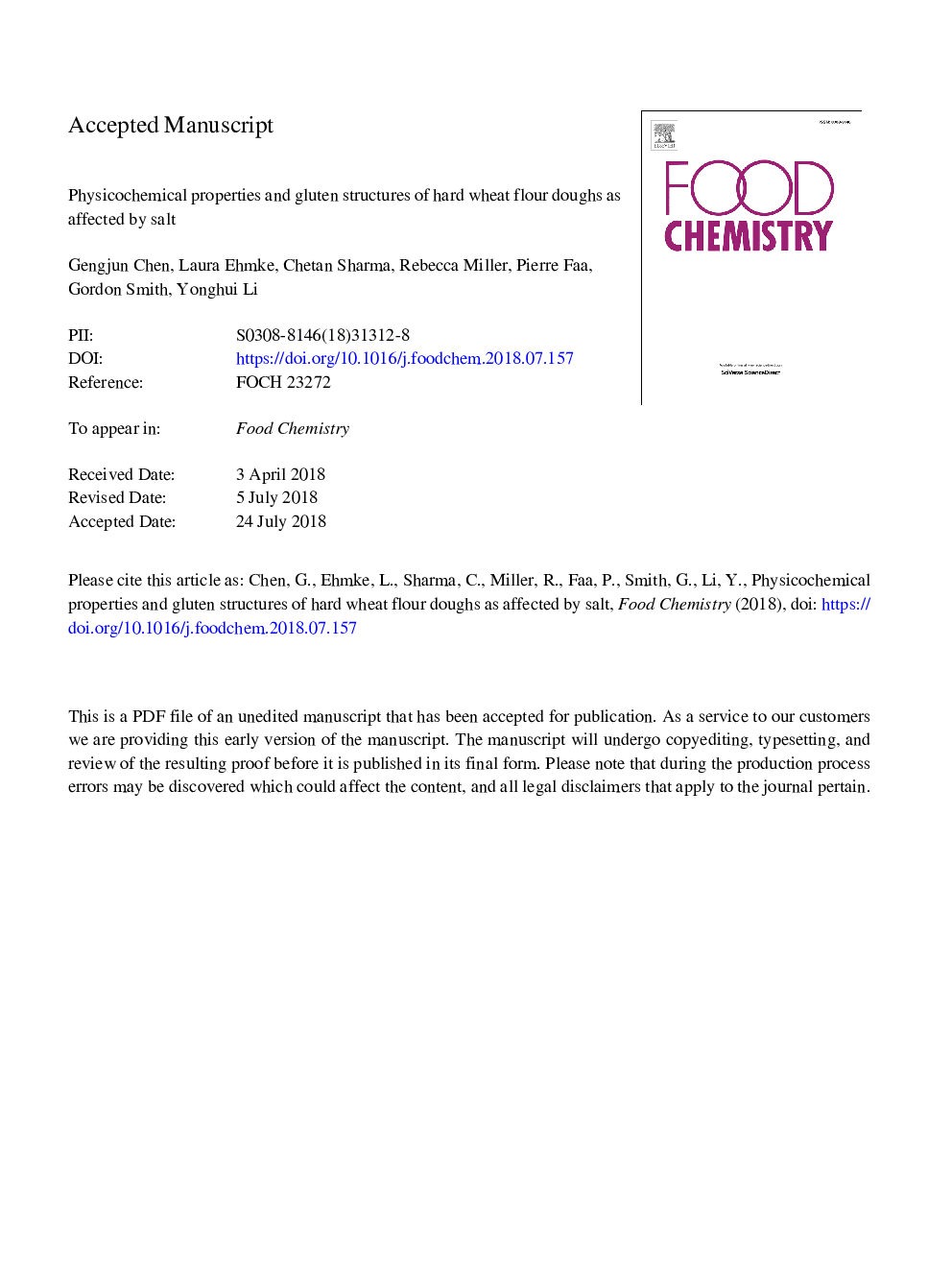| Article ID | Journal | Published Year | Pages | File Type |
|---|---|---|---|---|
| 11027428 | Food Chemistry | 2019 | 29 Pages |
Abstract
Hard wheat flour doughs were prepared with five different levels of sodium chloride, and rheological properties were characterized. Zeta potential, disulfide-sulfhydryl groups, surface hydrophobicity, secondary structure, and extractable gliadin and glutenin of gluten were analyzed to elucidate gluten structure changes induced by salt. Addition of higher levels of salt (2.0 and 2.4%, fwb) in doughs resulted in larger storage and loss modulus, and elongational viscosity. Starch gelatinization temperatures increased with higher amounts of salt. The presence of salt decreased the free sulfhydryl content but increased the β-sheet structure of gluten. RP-HPLC indicated that salt enhanced the macromolecular aggregation of gluten proteins. The changes in gluten molecular conformation and network structure induced by salt significantly contributed to the improved physicochemical properties of dough. This study provides a better understanding of salt functionality in hard wheat flour dough and a valuable guide in searching for salt alternatives for bakery products.
Keywords
Related Topics
Physical Sciences and Engineering
Chemistry
Analytical Chemistry
Authors
Gengjun Chen, Laura Ehmke, Chetan Sharma, Rebecca Miller, Pierre Faa, Gordon Smith, Yonghui Li,
